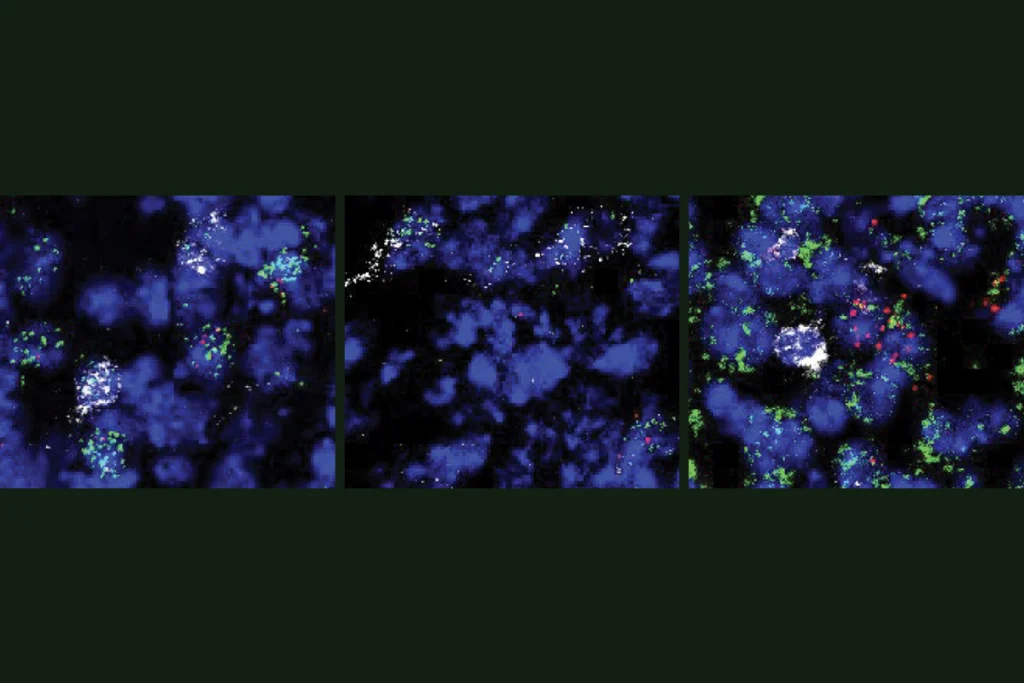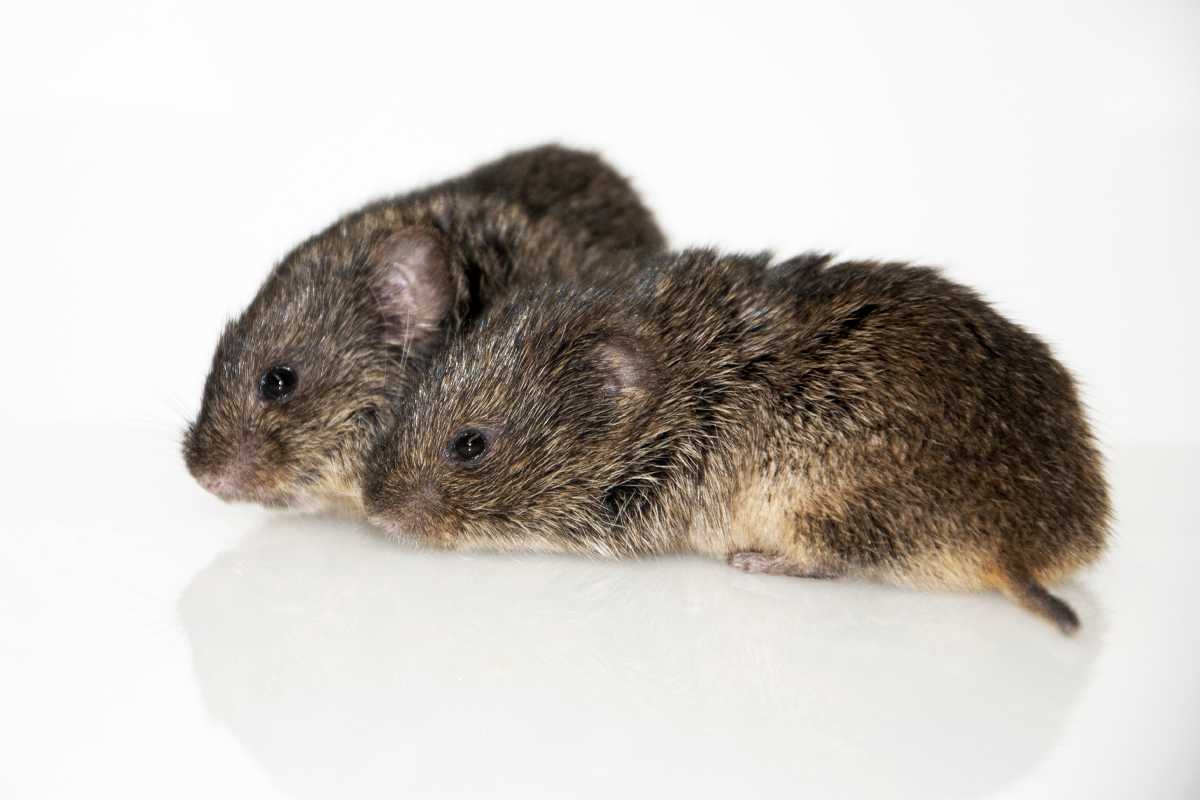
Oxytocin prompts prairie voles to oust outsiders, fortifying their friendships
The “love hormone” drives the neurobiology behind platonic bonds in animals usually studied for their romantic attachments.
Prairie voles do not need oxytocin receptors to bond with a mate or care for their pups, but the receptors are indispensable for forming robust friendships, according to a study published today in Current Biology.
Female voles that lack the receptors struggle to make friends with other females, and when they do, they are not motivated to spend time with friends over strangers and quickly lose track of their friends in a group, the study found.
The findings suggest that oxytocin is required for nurturing specific relationships, rather than for general sociability, says principal investigator Annaliese Beery, associate professor of integrative biology and neuroscience at the University of California, Berkeley. That concept—known as selectivity—is a “really important component of human friendships,” she says.
Until now, prairie voles have typically been used to probe the neural basis of love: The animals are unusual among rodents for selecting a single partner to nest and raise pups with. Compared with non-monogamous vole species, prairie voles have a high density of oxytocin receptors in multiple brain regions, including the nucleus accumbens.
Drugs that block the receptors there impair mate attachment in prairie voles, whereas brain infusions of oxytocin fast track the animal’s choice of a lifelong partner.
Oxytocin appears to be especially important in the initial stages of bond formation, according to studies of transgenic prairie voles. Voles genetically engineered to carry loss-of-function mutations in both copies of the oxytocin receptor gene are less likely to bond with a littermate they have been housed with for less than a week, according to work reported in a 2024 preprint.
These receptor-deficient voles eventually pair bond with animals that they have lived with for longer periods, according to a 2023 Neuron paper. But those relationships take longer to kindle than in wild-type animals, Manoli says.
A
lthough pair bond formation doesn’t require oxytocin receptors, the hormone still appears to contribute to social attachments, says Devanand Manoli, associate professor of psychiatry at the University of California, San Francisco, who led the studies described in the preprint and the 2023 paper, and is an investigator on the new paper.Proper bonding involves two “separate modules of behavior,” Manoli says: Establishing a relationship with another animal, and rejecting other potential mates.
Oxytocin receptors appear to be particularly important for the latter: When an unknown animal is introduced, engineered voles spend more time “huddling” with the stranger than wild-type voles do, sometimes favoring the new rodent over their partner, the preprint found.
Still, it was unclear whether oxytocin levels differ in these animals, or if the hormone acts through alternate pathways. Just two of oxytocin’s nine amino acids differentiate it from another hormone, vasopressin, and the two molecules are known to bind to each other’s receptors. Vasopressin is also linked to social behaviors: Rhesus macaques—which are normally socially avoidant—act friendlier toward other monkeys after inhaling the hormone.
And researchers also weren’t sure whether the findings on oxytocin’s role in pair bonding in voles applied to other types of relationships, including the same-sex peer bonds observed in prairie vole colonies, says Zoe Donaldson, professor of behavioral neuroscience at the University of Colorado Boulder, who studies prairie vole attachments but was not involved in the new paper. “One of the questions we get asked all the time is, ‘How generalizable are the mechanisms that underpin these different bonds?’”
In the new study, Beery’s team took the oxytocin-receptor-deficient prairie voles from Manoli’s lab and housed each of them with an animal of the same sex from weening to adulthood. Compared with wild-type rodents, the engineered animals were slower to establish friendships, which also turned out to be less stable.
When new prairie voles were introduced to the housing unit—in what Beery calls the “cocktail party” paradigm—the receptor-null voles quickly lost interest in their original friend. And when separated from others in a nearby compartment, the engineered animals would push a lever to interact with their companion or a stranger a similar number of times, the study found.
Those findings suggest that, as with mate attachments, oxytocin signaling can sometimes promote the “rejection of outsiders” in friendships, Beery says.
T
he voles lacking oxytocin receptors had lower oxytocin release and fewer release sites in the nucleus accumbens than unedited animals, Beery’s team found using a newly developed nanosensor on electrically stimulated brain tissue.That nanosensor analysis—alongside unpublished work showing reduced numbers of oxytocin-producing neurons in the engineered voles’ nucleus accumbens—means that researchers can rule out oxytocin upregulation in those animals, Manoli says. But the small amount that remains could still exert its effects through vasopressin receptors, he adds.
It’s unclear, however, whether oxytocin release is also squelched in animals during social interactions. “It’s at the technological cutting edge, but it’s still limited,” Donaldson says of the nanosensor analysis.
And findings from transgenic animals should always be “taken with a pinch of salt,” she adds. Deleting a gene from every cell of an organism from birth means that researchers don’t know the extent to which the brain compensates for oxytocin depletion during development, Donaldson says.
Another research group, inspired by Beery’s findings, is probing the neural basis of friendship in prairie voles genetically manipulated in adulthood. Stimulating neurons that project from the ventral hippocampus to the nucleus accumbens using adenoviral constructs prompts voles to shift allegiances, according to unpublished work from Thomas McHugh’s lab at the RIKEN Center for Brain Science. Specifically, the activation causes a vole in a cage with a non-preferred peer to favor that housemate over a previously established friend.
“The ventral hippocampus is known to be important for memory. Change of friendship is also a type of memory formation,” says Genki Minamisawa, a research scientist in McHugh’s lab.
Similarly, when prairie voles observe non-preferred animals performing actions that benefit them both—such as pressing a lever for food pellets—the voles switch preferences if another friend doesn’t reward them in the same way. That flexibility appears to involve the ventral hippocampus: Inhibiting that brain region renders the voles more loyal, the team found.
Compared with long-term romantic relationships, or parent-child attachments, friendships are much more flexible, McHugh says. It’s possible that this neural circuity is especially important for these more plastic relationships, he says.
Those findings are a good step toward identifying the brain regions involved in friendship, Beery says. Although the nucleus accumbens likely contributes to the prosocial aspect of building friendships, rejecting outsiders likely stems from different parts of the brain, she adds. Oxytocin injections targeting the amygdala of meadow voles—a non-monogamous but seasonally social species—make the voles less likely to snub strangers, according to unpublished work from Beery’s lab.
Oxytocin’s opposing effects in different brain regions are something that Beery’s group plans to investigate further, alongside the neurobiological features that distinguish peer relationships from pair bonds, she says.
For now, researchers are pleased to finally discover some of the biology behind platonic relationships, Donaldson says. “Because not everyone is happily married, shall we say.”
Recommended reading

Neurons fuel lung tumors that have spread to brain
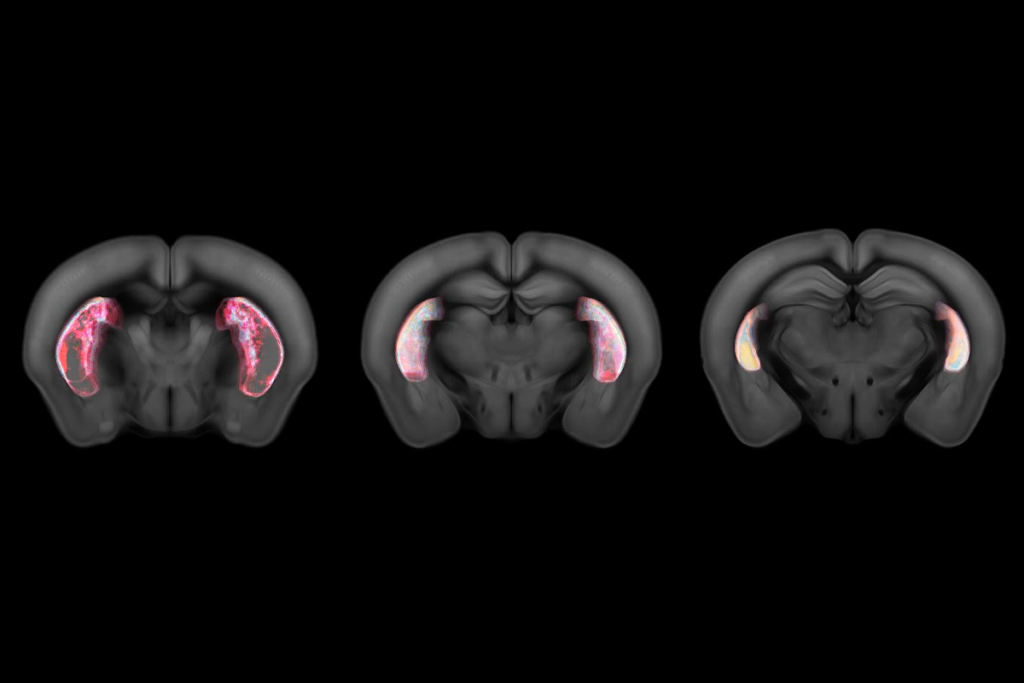
Some dopamine neurons signal default behaviors to reinforce habits

Faked results lead to retraction of high-profile cancer neuroscience study
Explore more from The Transmitter
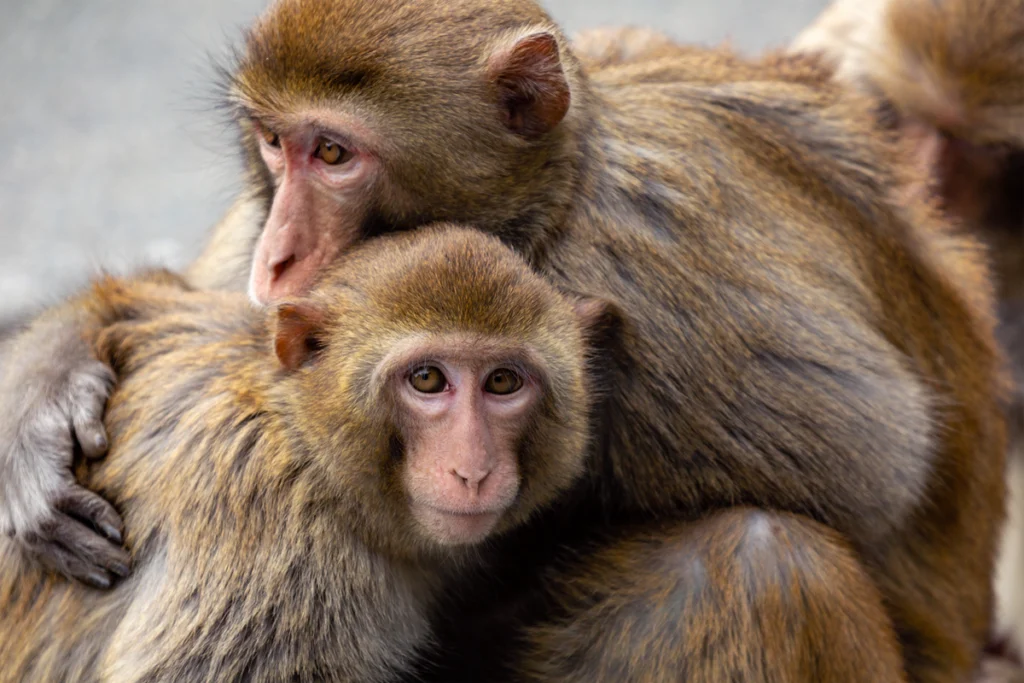
Vasopressin boosts sociability in solitary monkeys
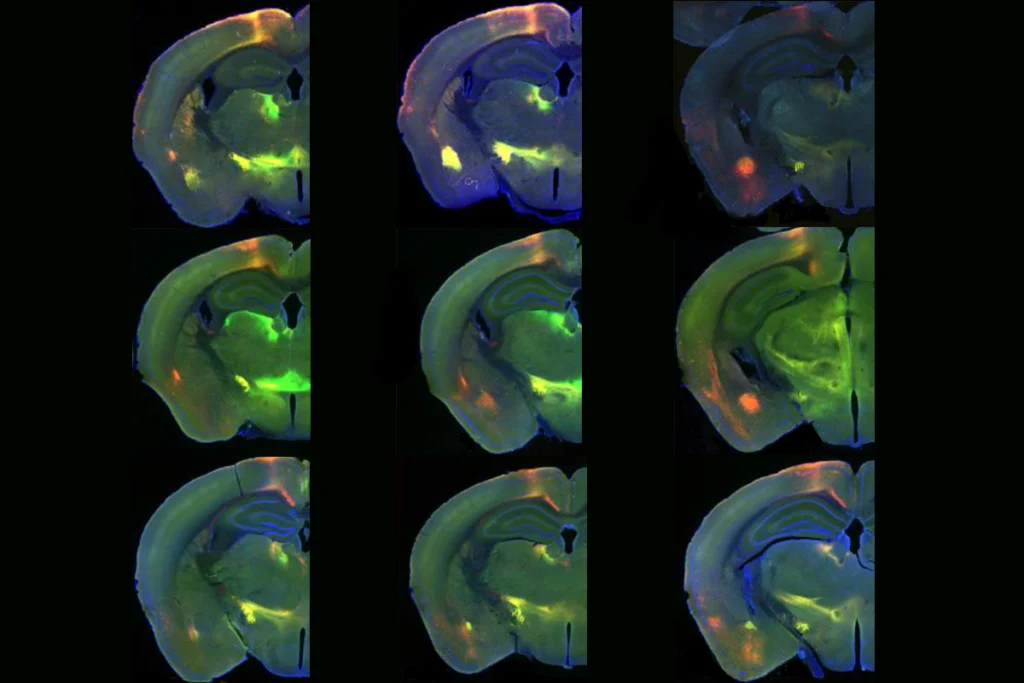
Newfound gene network controls long-range connections between emotional, cognitive brain areas
